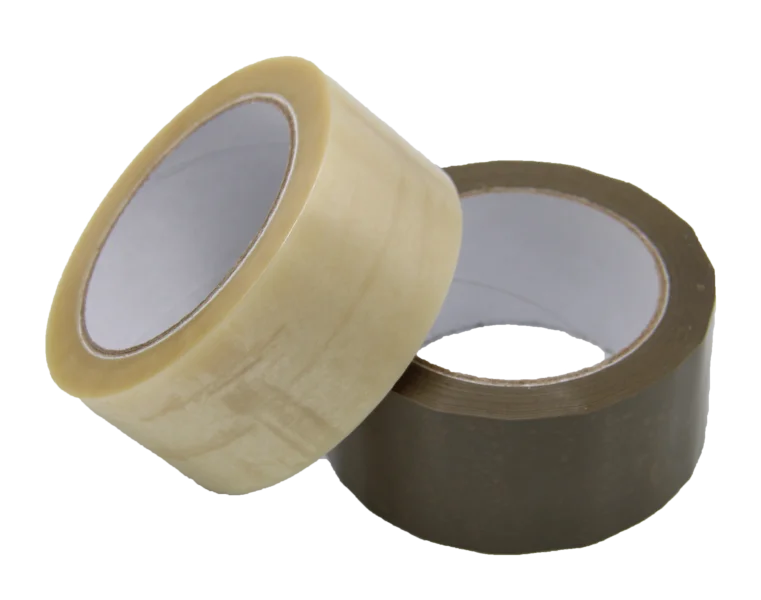- 24 Tech Roqad st Ny 10023
- info@mavenautomation.co.in
- Office Hour : 08:00am - 6:00pm

Our selection includes paper tapes that are eco-friendly, as well as PP and PVC tapes in various sizes and colors. Our tapes aren’t just for sealing boxes; they can also be used for marking and communicating important information.
With our high-quality packaging tapes, your products can be safely transported and stored without any worries. Plus, they’re perfect for industrial packing needs.
In the packaging industry, “tape“ refers to adhesive compounds that are used to packaging materials such cardboard boxes, cartons, and other packaging containers to seal, secure, and strengthen them. Packaging tape is often constructed of paper or another flexible material with an adhesive coating on one side. To meet a variety of packing requirements, it comes in varying widths and thicknesses. Clear or transparent tape, brown or tan packing tape, and reinforced tape are examples of common types of packaging tape. In order to keep packages closed and undamaged during transportation and shield the contents from harm, tampering, or moisture, packaging tape is essential.
By securely sealing and strengthening packages and cartons, tape plays a crucial function in the packaging business. Packaging tape often sticks when pressure is applied because it is pressure-sensitive. The adhesive side of a strip of tape sticks to the packing material when it is applied to a package seam or closing, forging a solid bond. The package is successfully sealed with the tape, keeping it from opening while in transit and defending the contents from dirt, moisture, and manipulation. Tape, whether applied manually or by automated equipment, makes packing easier, improves the integrity of products, and supports dependable and efficient packaging processes across a range of sectors.
The packaging business relies heavily on tape because it provides a number of useful properties. In order to safeguard the contents during transit and storage, it offers a safe and dependable method of sealing boxes, cartons, and packages. There are many types of packaging tape, including plastic (PVC or polypropylene) and paper, each with unique benefits. Numerous tapes include qualities such a strong adhesive for dependable sealing, resistance to moisture and the elements, simplicity in use, and compatibility with automated sealing equipment. A few packaging tapes are also offered in various widths and thicknesses to handle varied package shapes and weights, enabling customization based on particular packaging needs.
For boxes and packages, it offers safe and tamper-evident sealing, guaranteeing that goods are kept whole during transportation and storage. Because of its adhesive qualities, which produce a tight bond, packages are more robust and stable overall. Additionally, by streamlining the sealing procedure and lowering labour time and costs, tape helps make packaging operations easier and more effective. Additionally, because it is available in a variety of types, widths, and colours, it allows for branding and labelling. It also gives versatility in design and modification. Overall, tape is a low-cost, dependable, and essential equipment in the packaging sector that ensures product safety and supply chain logistics effectiveness.
To ensure the confinement and safety of commodities during travel and storage, it is widely used to seal and close boxes, cartons, and packages. Tape also helps reinforce package seams and, in the case of tamper-evident tape varieties, prevents theft. It aids in labelling shipments and offers crucial information for identification and sorting. To attach promotional items, labels, or paperwork to goods, many tape kinds are used, such as double-sided tape or adhesive transfer tape. In conclusion, tape is essential for protecting, identifying, and improving the overall integrity of packaged goods.
In order to maintain tape’s regular and dependable functioning, maintenance is essential. Check the tape dispensers frequently for wear, breakage, or debris that could interfere with the tape’s application. Clean the apparatus to get rid of any dust or adhesive buildup that can prevent tape adhesion. To avoid infection, make sure the tape rolls are kept in a clean, dry environment. To keep the tape application process effective, replace tape dispensers or other components that exhibit wear. In order to avoid tape jams or uneven sealing, make sure the dispensing equipment’s tension and alignment settings are correct. Packaging experts can improve tape performance, minimise downtime, and guarantee the integrity of packaged goods during transit and storage by performing routine maintenance.